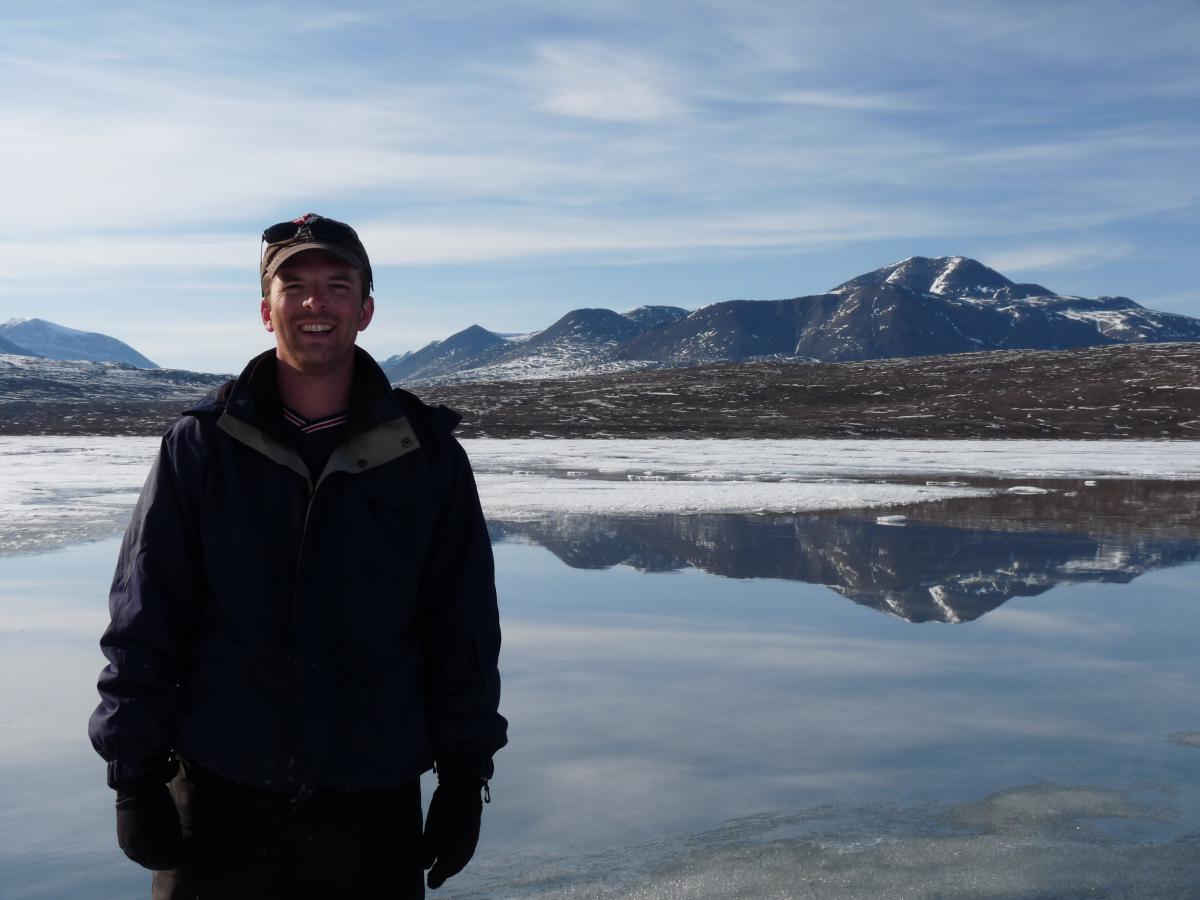In some ways, Craig Emmerton’s path in science parallels his childhood.
Both took him to lakes across North America and instilled in him a curiosity about how the land and water interact. Growing up, he lived in several provinces and journeyed around Canada and the United States with his family, visiting lakes and landscapes of all varieties. “My Dad, in all of our travels, always wanted to have a piece of property somewhere on a lake. If it was in the Maritimes or in Ontario, we had a lake,” he says.

His scientific career has likewise led him to an array of lakes across Canada. His undergraduate studies at McMaster University brought about his first stint at the Experimental Lakes Area (now IISD-ELA) in 2001, where he worked with the hydrology program and on projects related to mercury and greenhouse gases in the ecosystems. He then headed west for his Master’s degree at Simon Fraser University, where he studied how the annual flooding of Mackenzie River Delta lakes affect their health and chemistry. Next, he worked for the Government of Alberta, monitoring the recovery of Lake Wabamun, which had experienced a large spill of heavy oil from a train derailment. “It was an excellent experience in regulating industrial activities and monitoring how freshwaters recover from a large oil spill,” he says.
Finally, his PhD research with the University of Alberta took him to one of the northernmost lakes in Canada, Lake Hazen on Ellesmere Island, Nunavut. In the high Arctic, nearly as far north in Canada as one can go, Emmerton studied how sparsely vegetated landscapes in the lake’s watershed were changing in response to observed rapid climate change in the area. “I was trained to study the movement and composition of water, but this project brought me into land and soil processes. But I was still studying streams and lakes in the area, so it was truly an ecosystem-level project that brought together what was happening in the aquatic system with what was happening on land,” he says.
Such integrated ecosystem studies involving multiple science disciplines have resulted in a bit of an identity crisis for Emmerton. When asked if he’s a hydrologist, he laughs. “I don’t know what I am. I’ve studied hydrology, but I’m more of a biogeochemist, which is kind of an awful word for somebody who studies how chemical, biological and physical processes interact in the environment. You can sometimes feel like a generalist who tries to integrate all of those sciences together.”
While these wide-ranging skills make it hard to label Emmerton, they positioned him exceptionally well to work as a postdoctoral fellow at IISD-ELA, mining the 45-year dataset on the facility’s land, water and climate. He will be studying how climate-related changes in IISD-ELA’s forested watersheds, as detected by satellites, associate with changes in the hydrology, biology and chemistry of IISD-ELA lakes. Long-term changes in the forested landscape, caused by drought or disease, can be detected by satellites and can ultimately affect the functioning of streams and lakes that have been monitored at ELA for decades.
“In the boreal, for instance, if you go through a drought phase, trees are short on water and needles can turn brown, which optical sensors on satellites can detect. We are fortunate to have a 45-year dataset where we know there was a good 20 years in the 1970s and 1980s that were drier than normal at ELA. I’m trying to find out if what we see in the satellite imagery can match what ELA scientists observed in the watersheds and lakes.”
By creating clear associations between the satellite visuals and changes in ELA lakes and their watersheds, Emmerton hopes to extrapolate understanding to a larger area. “If we find a nice connection between the ELA lakes and what the satellites are seeing, then we may be able to infer lake health elsewhere in the boreal forest, because satellites are monitoring the entire Earth constantly.”
Given that Emmerton seems willing to visit nearly every lake in Canada, either as a tourist or a scientist, studying lakes and their watersheds from a satellite-eye view might be more efficient for the enthusiastic academic. “I’ll just sum up my research career as work that feels funny to get paid to do,” he says.
Emmerton’s post doctoral position is supported by an anonymous donor.